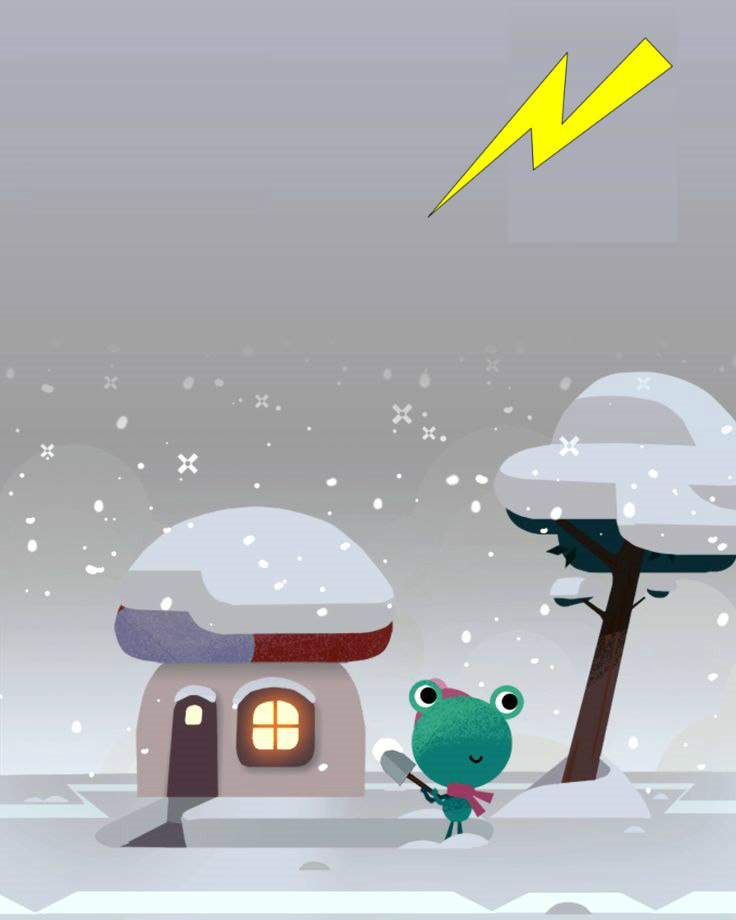Thundersnow is just what the name implies, a snow storm with thunder and lightning. These snow events don't occur when a gentle snow fall, but happen when the weather gets really bad. An example of such a recent thunderstorm is the bomb cyclone of 2018 that hammered much of the northeastern United States. If it never gets cold enough to snow where you live then obviously thundersnow won't happen but It is reported that, on average, there are 6.4 events worldwide. And while these blizzard/thunderstorms aren't common there are a few places that are more likely to experience them: Great plains, mountains, coastlines, and lake-effect regions. "Areas reporting higher-than-average thundersnow events include the eastern side of the Great Lakes of the United States and Canada, the plains regions of the midwestern United States, the Great Salt Lake, Mount Everest, the Sea of Japan, Great Britain, and elevated regions of Jordan and Israel. Specific cities known to experience thundersnow include Bozeman, Montana; Halifax, Nova Scotia; and Jerusalem." In the northern hemisphere, thundersnow generally occurs in April and May. The peak formation month is March. Coastal areas may experience sleet, hail, or freezing rain with their thundersnow.
"Conditions that produce snow tend to have a stabilizing effect on the atmosphere which is why thundersnow happens so rarely. Thunderstorms can form in winter, but they have different characteristics. A typical normal thunderstorm consists of tall, narrow clouds that rise from a warm updraft leading from the surface up to around 40,000 feet. Thundersnow usually forms when layers of flat snow clouds develop instability and experience dynamic lifting. Three causes lead to the instability.
- A normal thunderstorm at the edge of a warm or cold front can run into cold air, changing rain into freezing rain or snow.
- Synoptic forcing, such as might be seen in an extratropical cyclone, can lead to thundersnow. The flat snow clouds become bumpy or develop what are called "turrets." Turrets rise about the clouds, making the top layer unstable. Turbulence causes water molecules or ice crystals to gain or lose electrons. When the electrical charge difference between two bodies becomes large enough, lightning occurs.
- A cold air front passing over warmer water can produce thundersnow. This is the type of thundersnow most often seen near the Great Lakes or near and ocean."
The thunder may be quieter but the lightning is brighter because of the reflective quality of snow. The lightning associated with thundersnow appears white or a golden shade while normal ightning is blue or violet in color. During a thundersnow, the lightning is more likely to have a positive electrical charge. Positive lightning can be up to ten times stronger than negatively-charged thunder, up to 300,000 amperes and one billion volts!
The conditions that lead up to thundersnow can include dangerously cold temperatures and poor visibility from blowing snow. Tropical force winds can also be possible. thundersnow is usually associated with blizzards. As spring approaches and the weather patterns change, we see an increase risk in the likeliness of thundersnow occurring.
I've experienced one such storm. It happened a few years ago in mid-May. One minute Lily Pad spring is in full bloom. The next, we're under a foot of freshly fallen heavy wet snow. It ranks as one of the weirdest weather experiences I've ever encountered.
Tomorrow is Wednesday and that means a visit from Dharma Frog. It also happens to be his birthday. I hope you'll plan on stopping by to join us for a birthday breakfast.
Peace.

 RSS Feed
RSS Feed